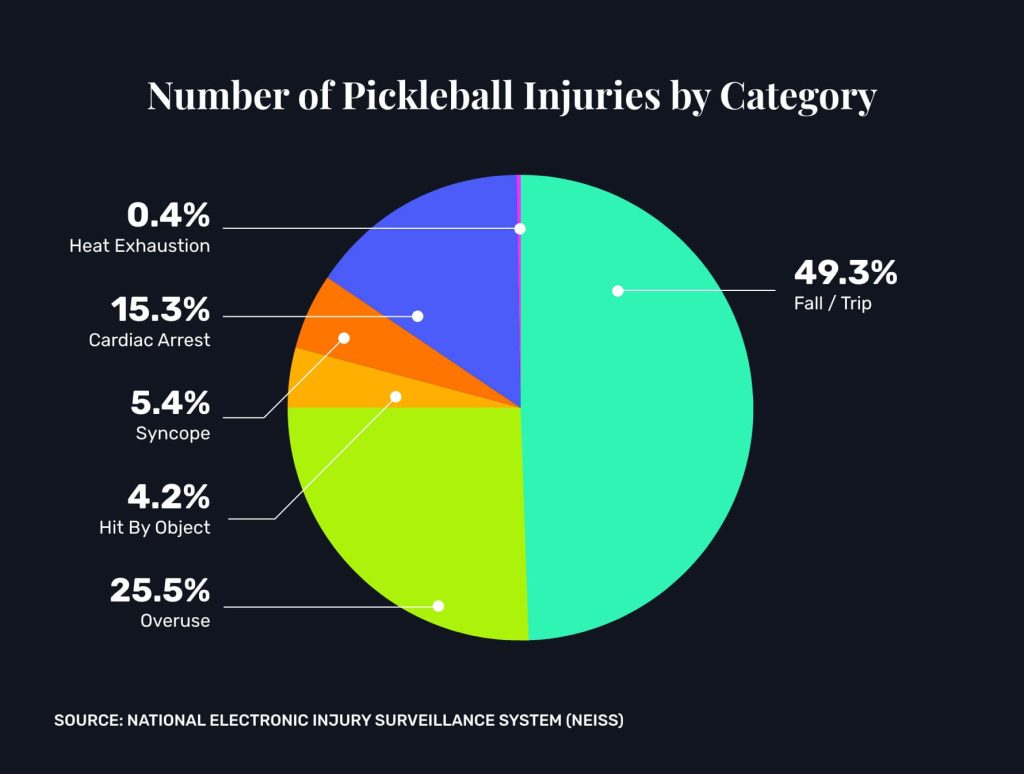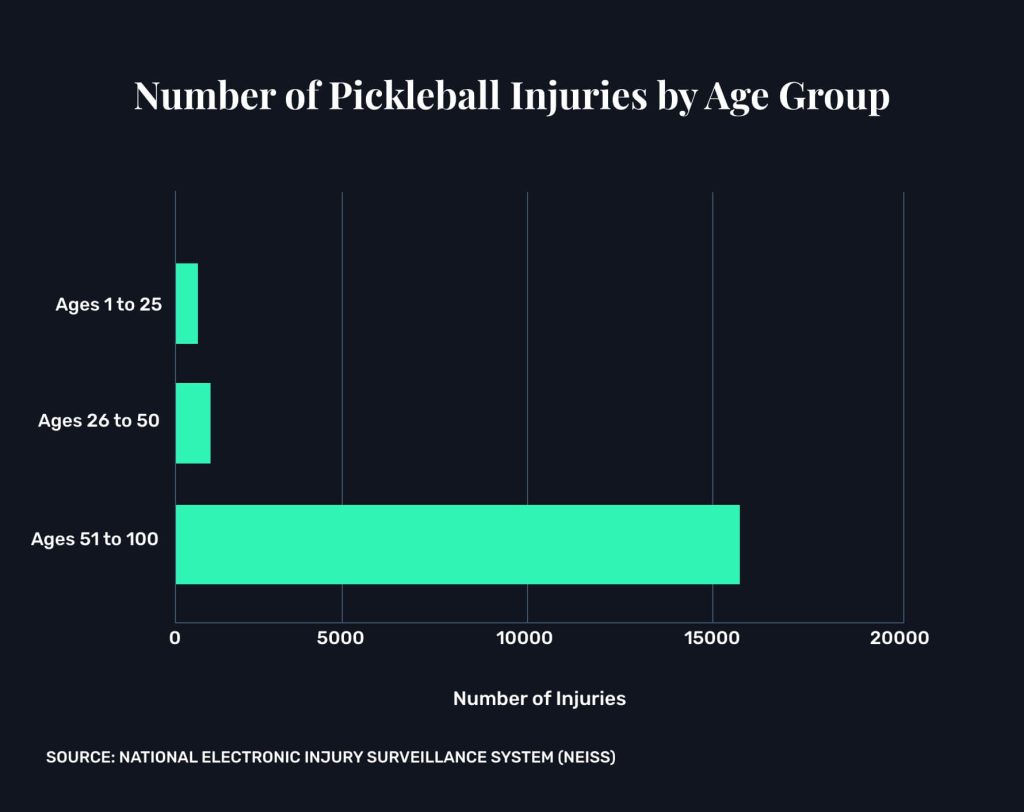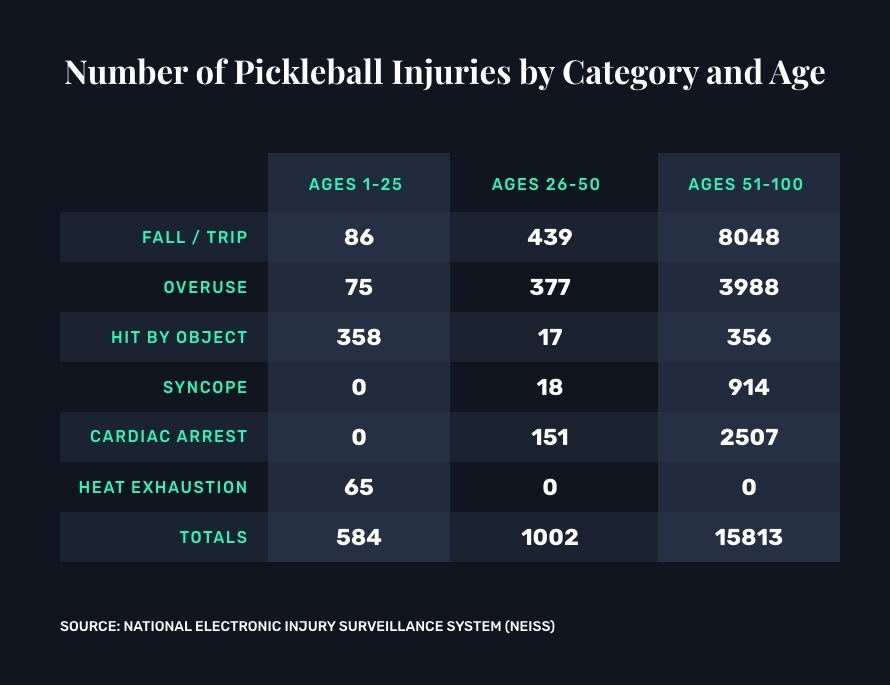Pickleball has experienced a surge in popularity in recent years, captivating players of all ages with its dynamic blend of tennis, badminton, and ping pong.
Pickleball, which is played with a perforated plastic ball and wooden paddles on a badminton-sized court, is the fastest growing sport in the U.S., with the number of players rising from 4.8 million in 2021 to 8.9 million in 2023, according to USA Pickleball. Alongside this growth, the pickleball injury rate has been rising significantly as national estimates of pickleball-related emergency department visits increased from around 1,313 to 24,461 from 2014 to 2023.
While the sport offers numerous physical health benefits, it’s essential to acknowledge the potential for injuries. This analysis by Atlanta personal injury attorneys at Piasta Walker Hagenbush LLC delves into the latest data on pickleball injuries, identifying common injury types and risk factors.
The most common pickleball injuries primarily stem from the sport’s quick-paced nature and the physical demands it places on the body, especially during sudden movements and intense rallies.
Common pickleball injuries include soft tissue injuries such as sprained ankles, knee injuries, ACL injuries, rotator cuff injuries, worsening of arthritis, Achilles tendon tears/strains, and bone fractures.

Pickleball has a relatively high injury rate. Pickleball injury statistics by age show that injuries are particularly prevalent among older adults who make up a large portion of the sport’s participants. While pickleball is often seen as a low-impact and accessible sport, the quick movements, sudden direction changes, and repetitive motions involved in playing can lead to injuries.

While pickleball is popular among all age groups, it has a particularly strong following among older adults, many of whom may have age-related physical limitations. As people age, they often experience decreased flexibility, muscle strength, and balance, all of which can increase the risk of injury during physical activities like pickleball.
According to Yale Medicine, from 2002 to 2022, there was a 90-fold increase in fractures related to pickleball, with a majority of these injuries occurring in players between ages 60 and 69.
Furthermore, data collected by the National Electronic Injury Surveillance System (NEISS) examines pickleball-related injuries by mechanism of injury and age groups of 1 to 25, 26 to 50, and 51 to 100.
The following are pickleball injury statistics by age:

The worst pickleball injury is typically an Achilles tendon rupture. This severe injury occurs when the Achilles tendon, which connects the calf muscles to the heel bone, tears completely or partially. An Achilles tendon rupture is often caused by a sudden, forceful push-off movement, such as quickly changing direction or jumping during a game.
Recovering from an Achilles tendon rupture usually requires surgery, followed by a lengthy rehabilitation process that can last several months. During recovery, injury victims may need to wear a cast or boot and undergo physical therapy to regain strength and mobility. The recovery process can be especially challenging for older players, who may have a longer healing time and face additional risks during surgery.
While the current data available on pickleball-related injuries provide valuable insight into the common risks associated with the sport, it’s important to recognize that this data is still evolving. As pickleball continues to grow in popularity, additional comprehensive studies can be expected to emerge, offering a clearer picture of pickleball injury trends and preventive measures. Overall, staying informed and proactive in injury prevention is key to enjoying the game safely.
Sources
https://www.nbcnews.com/health/health-news/pickleball-injuries-rising-bone-fractures-rcna137044
https://pubmed.ncbi.nlm.nih.gov/31796221/
https://www.ncbi.nlm.nih.gov/pmc/articles/PMC11179465/
https://www.yalemedicine.org/news/how-to-prevent-pickleball-injuries
https://news.uark.edu/articles/70054/pickleball-injuries-more-frequent-severe-than-you-might-think
https://www.scirp.org/journal/paperinformation?paperid=130840
"*" indicates required fields